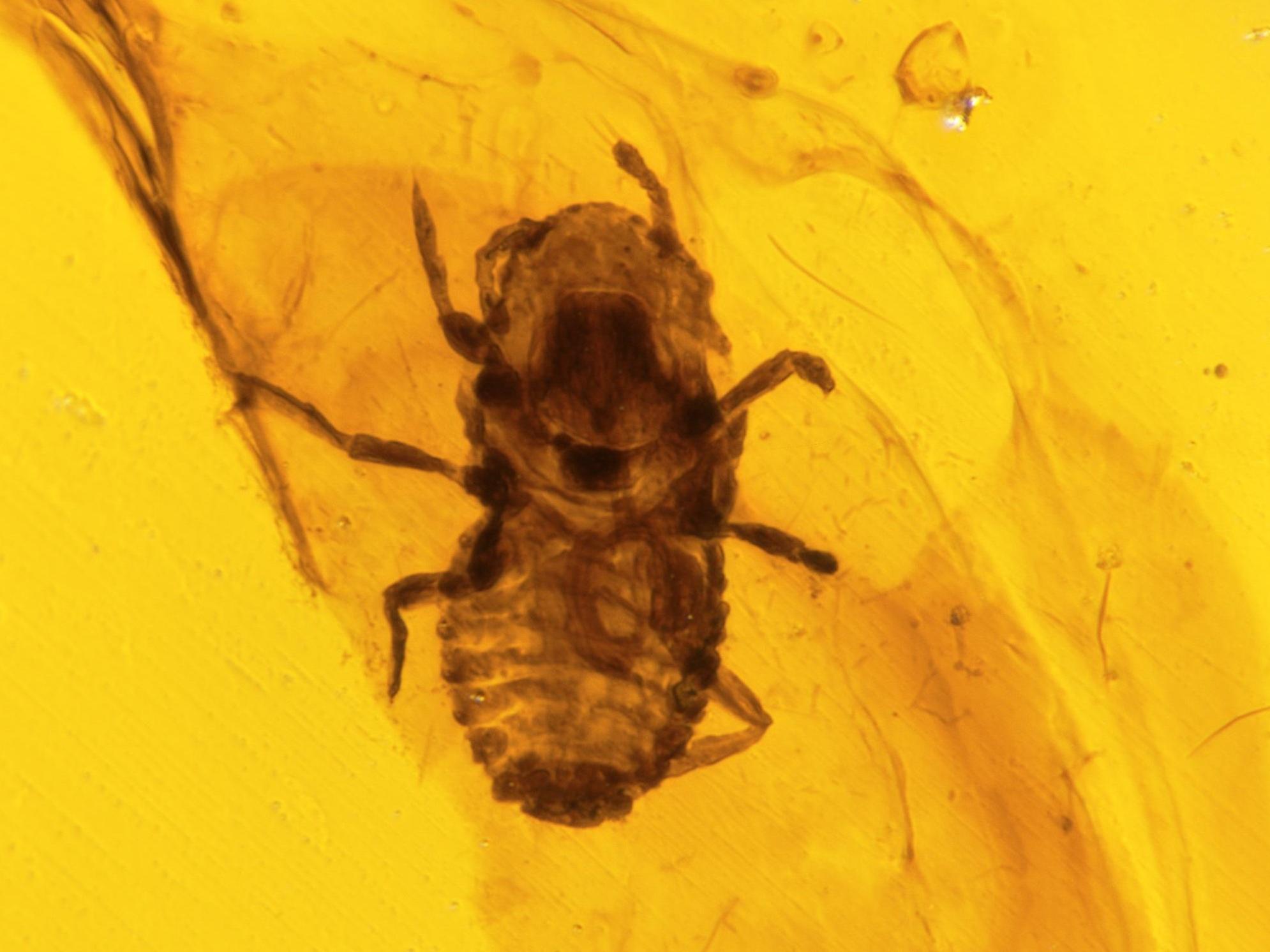Parasitical toothed insects which sucked blood of dinosaurs discovered in 100-million-year-old amber
Discovery in prehistoric dinosaur feathers provides new clues about evolution of modern-day lice

A previously unknown species of parasitic insect which dined on the blood of dinosaurs 100 million years ago has been discovered preserved in prehistoric amber.
The wingless bugs, found clinging to dinosaur feathers sealed inside two pieces of fossilised tree resin, provide new clues about the origins of lice which feast on modern-day birds.
The 10 insect nymphs were studied by Chinese and American biologists after being discovered in northern Myanmar’s Kachin province.
Researchers said the new species, Mesophthirus engeli, had similar bodies to modern lice and latched onto feathered dinosaurs with powerful jaws in the way present-day parasites bite into birds.
Creatures that feed on blood have previously been identified from both the Jurassic period – 201 million to 145 million years ago – and Cretaceous era, 145 million to 66 million years ago.
But despite the prevalence of feathered dinosaurs at this time, insects that fed on their feathers have not been reported until now.
Researchers from Beijing’s Capital Normal University and the Smithsonian Institution’s National Museum of Natural History in Washington DC said their findings suggested feather-feeding parasites evolved around the same time as the diversification of birds and feathered dinosaurs.
Writing in the journal Nature Communications, they said: “Most significantly, these insects are preserved with partially damaged dinosaur feathers, the damage of which was probably made by these insects’ integument-feeding behaviours.
“This finding demonstrates that feather-feeding behaviours of insects originated at least in mid-Cretaceous, accompanying the radiation of feathered dinosaurs including early birds.”
The discovery of the insects - which scientists said were remarkably well-preserved - echoes Jurassic Park, in which dinosaurs are cloned from DNA found in blood inside a mosquito sealed in amber.
But the real-world research will not lead to resurrection of the prehistoric reptiles as the molecules are too fragile to survive for millions of years.
Join our commenting forum
Join thought-provoking conversations, follow other Independent readers and see their replies
Comments
Bookmark popover
Removed from bookmarks